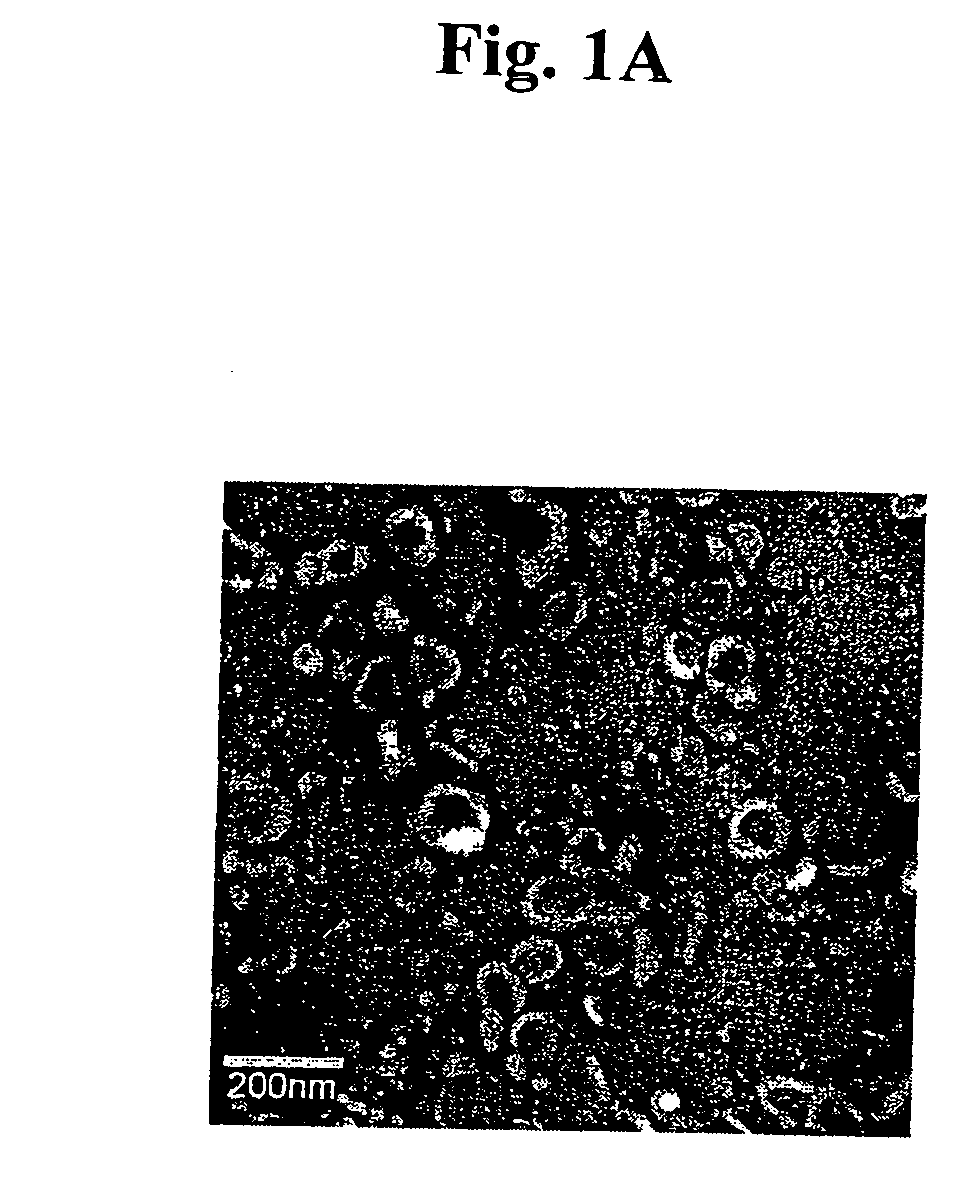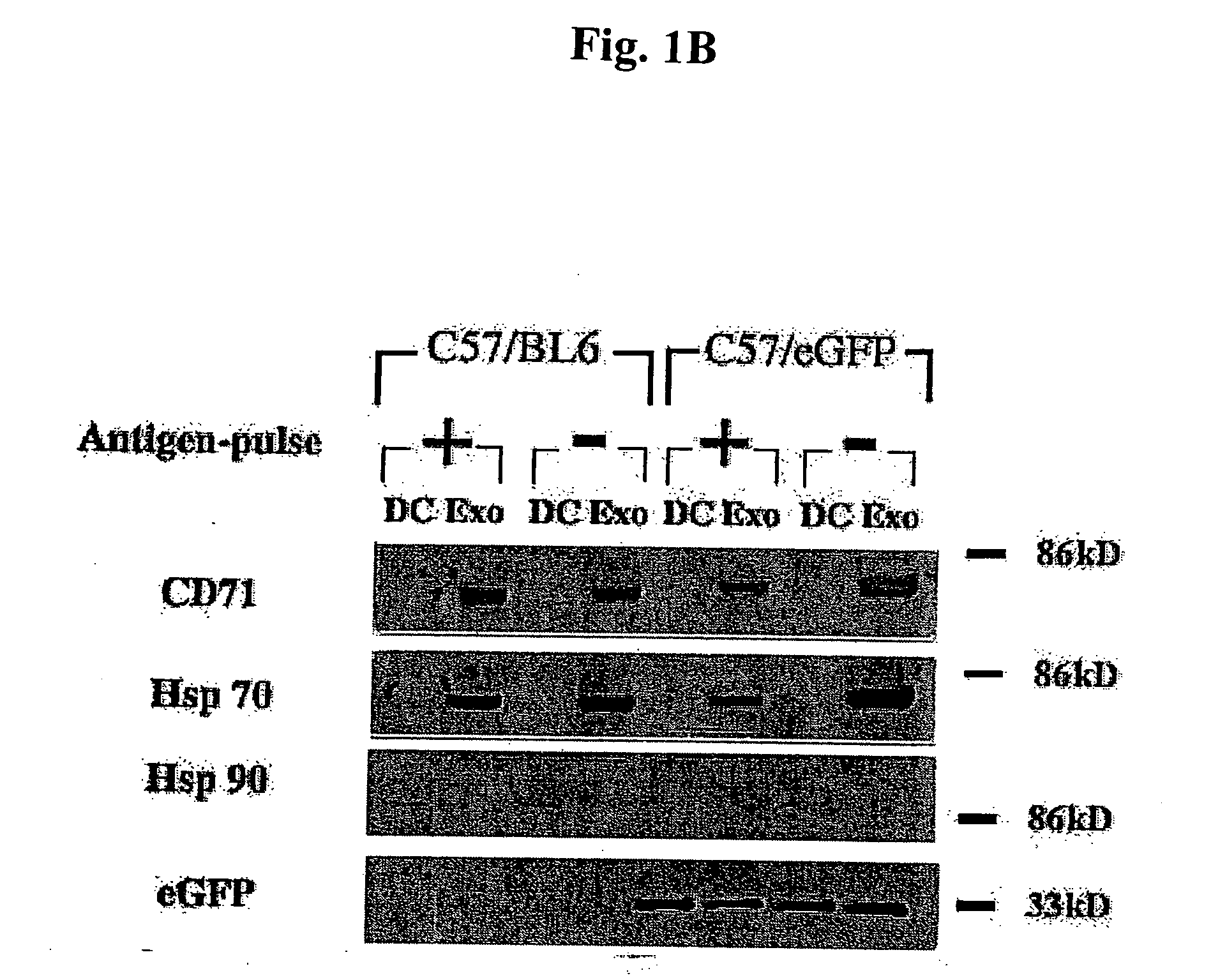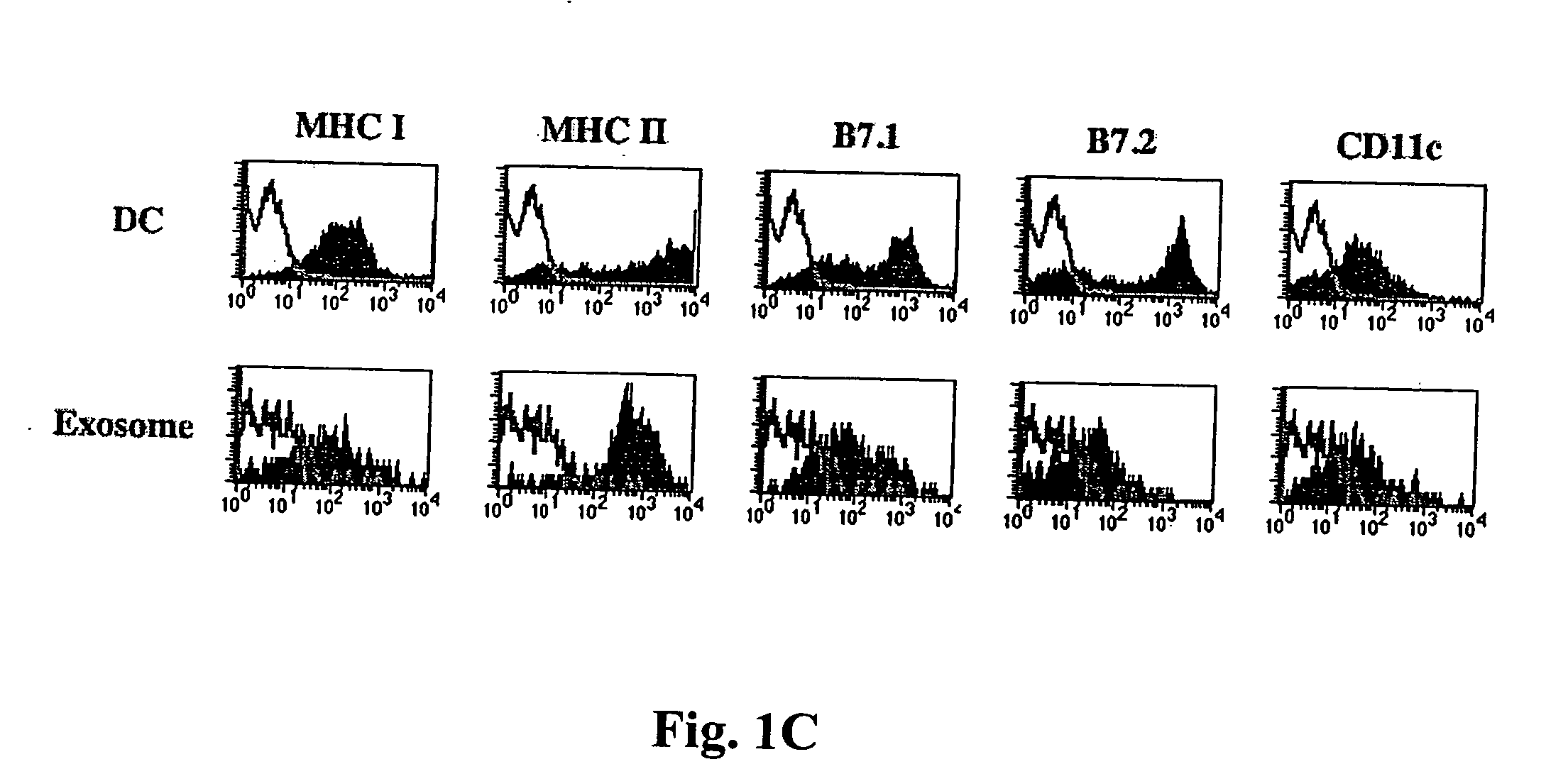Immunosuppressive exosomes
a technology of immune suppressive exosomes and exosomes, which is applied in the field of immunosuppressive exosomes, can solve the problems of complete loss of normal joint function, undesirable consequences of administration of whole dendritic cells, etc., and achieve the effect of suppressing an undesirable immune respons
- Summary
- Abstract
- Description
- Claims
- Application Information
AI Technical Summary
Benefits of technology
Problems solved by technology
Method used
Image
Examples
Embodiment Construction
[0058] For clarity and not by way of limitation, the detailed description of the invention is divided into the following subsections:
[0059] (i) cell sources for exosomes;
[0060] (ii) conditioning cells for exosome harvest;
[0061] (iii) exosome preparation from cells;
[0062] (iv) exosome preparation from serum;
[0063] (v) exosome-containing compositions;
[0064] (vi) methods of immunosuppression; and
[0065] (vii) methods of antagonizing exosome-mediated immunosuppression.
5.1 Cell Sources for Exosomes
[0066] The exosomes of the present invention may be derived from a variety of different cells, including, but not limited to, antigen presenting cells (“APCs”) such as dendritic cells (“DCs”) and macrophages, which may be harvested, for example, from tissues such as the bone marrow, spleen, lymph node, or thymus, or from the peripheral blood or serum derived therefrom. The scope of the invention further encompasses specialized antigen presenting cells, such as Langerhans cells of the sk...
PUM
| Property | Measurement | Unit |
|---|---|---|
| Composition | aaaaa | aaaaa |
| Immunogenicity | aaaaa | aaaaa |
Abstract
Description
Claims
Application Information
 Login to View More
Login to View More - R&D
- Intellectual Property
- Life Sciences
- Materials
- Tech Scout
- Unparalleled Data Quality
- Higher Quality Content
- 60% Fewer Hallucinations
Browse by: Latest US Patents, China's latest patents, Technical Efficacy Thesaurus, Application Domain, Technology Topic, Popular Technical Reports.
© 2025 PatSnap. All rights reserved.Legal|Privacy policy|Modern Slavery Act Transparency Statement|Sitemap|About US| Contact US: help@patsnap.com



